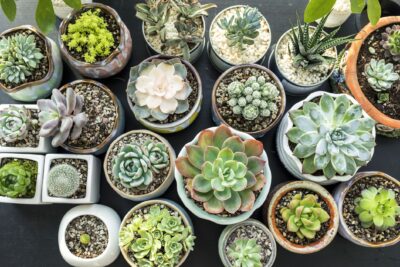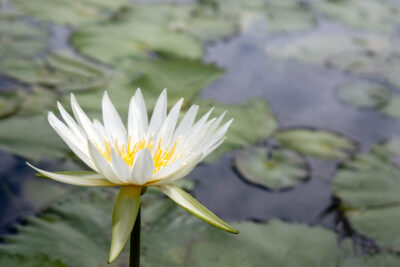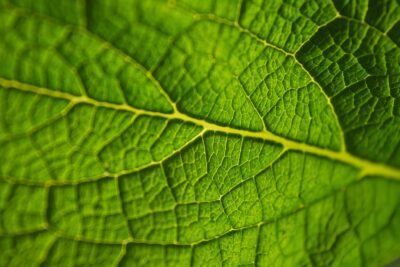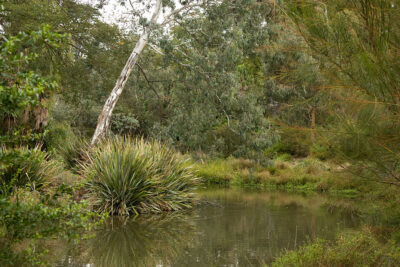
Unraveling the Mystery Behind the Name "Succulents"

Succulents have become increasingly popular in recent years, adorning homes, offices, and gardens with their unique beauty and resilience. These plants, characterized by their thick, fleshy leaves and ability to store water, come in a wide variety of shapes, sizes, and colors, captivating plant enthusiasts around the world. However, the origins of their name, "succulents," remain somewhat of a mystery.
We will delve into the fascinating history and etymology of the term "succulents." We will explore the different theories and explanations proposed by experts and enthusiasts, shedding light on the possible origins of the name. Additionally, we will discuss the characteristics and adaptations of succulents that contribute to their ability to thrive in arid environments. By the end of this article, you will have a deeper understanding of these captivating plants and the story behind their intriguing name.
- Succulents get their name from the Latin word "sucus," meaning juice or sap
- They are called succulents because they have thick, fleshy leaves or stems that store water
- The name "succulents" is a broad term that encompasses various plant families, including cacti
- They are also known as "fat plants" or "water storage plants."
- Succulents have adapted to arid environments and can survive long periods without water
- The name "succulents" highlights their unique ability to retain and conserve water
- Succulents are popular houseplants due to their low maintenance and unique appearance
- The name "succulents" reflects their popularity as decorative plants in gardens and landscapes
- The term "succulents" is widely used to describe a diverse range of plant species with similar characteristics
- Frequently Asked Questions
Succulents get their name from the Latin word "sucus," meaning juice or sap
Succulents are a fascinating group of plants known for their unique ability to store water in their leaves, stems, and roots. But have you ever wondered how these plants got their name? The answer lies in the Latin word "sucus," which means juice or sap.
This name is quite fitting for succulents, as their leaves and stems are typically thick and fleshy, enabling them to retain large amounts of water. This adaptation allows succulents to survive in arid and dry environments where other plants struggle to thrive.
When you look closely at a succulent, you can see the evidence of their water-storing capabilities. The leaves often appear plump and swollen, as if they are filled with juicy sap. This unique feature not only gives succulents their name but also makes them visually appealing and sought after by plant enthusiasts around the world.
The diversity of succulents
Succulents come in a wide variety of shapes, sizes, and colors. From the iconic rosettes of Echeveria to the spiky arms of a cactus, there is a succulent to suit every taste and style. Some succulents have smooth, rounded leaves, while others have spiky or serrated edges.
 Spotlight: Revealing Distinctive Spotted Leaves of Succulents
Spotlight: Revealing Distinctive Spotted Leaves of SucculentsThese plants can be found in various habitats, from deserts and rocky cliffs to tropical forests. They have adapted to survive in extreme conditions, making them resilient and hardy. Succulents have evolved unique characteristics that allow them to conserve water and thrive in their respective environments.
The popularity of succulents
In recent years, succulents have gained immense popularity among plant lovers and interior decorators. Their low-maintenance nature and striking appearance make them ideal for both indoor and outdoor spaces.
Not only do succulents add a touch of natural beauty to any setting, but they also offer numerous health benefits. These plants can improve air quality, reduce stress, and even boost productivity. It's no wonder that succulents are often chosen as the go-to plant for those looking to create a tranquil and inviting atmosphere.
Whether you are a seasoned plant enthusiast or just beginning your journey into the world of gardening, succulents are a fantastic addition to any collection. Their intriguing name, derived from the Latin word for juice or sap, perfectly captures the essence of these extraordinary plants.
They are called succulents because they have thick, fleshy leaves or stems that store water
Succulents are a diverse group of plants that have become increasingly popular in recent years. They are known for their unique and captivating appearance, characterized by their thick, fleshy leaves or stems. But have you ever wondered why these plants are called "succulents"? The answer lies in their remarkable ability to store water.
Unlike most plants, succulents have adapted to arid or dry environments where water is scarce. Their thick, fleshy leaves or stems act as reservoirs, storing water for survival during long periods of drought. This adaptation allows succulents to thrive in harsh conditions, making them well-suited for both indoor and outdoor gardens.
 Are Black Succulents Real Plants or Simply Dyed?
Are Black Succulents Real Plants or Simply Dyed?But the name "succulents" goes beyond their water-storing capabilities. It actually comes from the Latin word "succulentus," which means juicy or sap-filled. This aptly describes the plump and water-filled appearance of succulent plants, making the name a perfect fit for these unique specimens.
Furthermore, succulents belong to the family Succulentaceae, which is derived from the Latin word "succulentus." This family encompasses a wide range of plant species, including cacti, aloe vera, jade plants, and many more. They all share the common characteristic of storing water in their leaves or stems, which gives them their distinct appearance and resilience.
So, the next time you marvel at the beauty of a succulent plant, you can appreciate the name "succulent" for the fascinating qualities it represents. These plants have evolved to survive in some of the harshest conditions, all while providing us with a stunning array of shapes, colors, and textures to enjoy in our gardens or as houseplants.
The name "succulents" is a broad term that encompasses various plant families, including cacti
When we hear the term "succulents," we often think of those adorable little plants with fleshy leaves that are perfect for any indoor or outdoor garden. But have you ever wondered where the name "succulents" actually comes from? In this article, we will unravel the mystery behind the name and explore the fascinating world of these unique plants.
Succulents is a term used to describe plants that have adapted to arid environments by storing water in their leaves, stems, or roots. This ability to retain water allows them to survive in dry and harsh conditions where other plants may struggle.
Cacti are perhaps the most well-known members of the succulent family. They are characterized by their spiky and often cylindrical stems, which serve as a defense mechanism against herbivores. Cacti are native to the Americas and can be found in a wide range of shapes and sizes.
 Discover the Fascinating Succulents That Resemble Green Beans
Discover the Fascinating Succulents That Resemble Green BeansBut succulents go beyond just cacti. They belong to various plant families, including the Aizoaceae (ice plants), Crassulaceae (stonecrops), and Euphorbiaceae (spurges), among others. Each family has its own unique characteristics and adaptations to survive in arid climates.
Adaptations of Succulents
Succulents have evolved several remarkable adaptations that allow them to thrive in dry environments. One of the most notable adaptations is their ability to store water. Their leaves, stems, or roots are often thick and fleshy, acting as reservoirs to store water during periods of drought. This stored water sustains the plant during times when moisture is scarce.
Additionally, succulents have developed specialized tissues that minimize water loss through evaporation. They have a thick cuticle, a waxy layer on their surfaces, which helps to seal in moisture. Some succulents also have tiny hairs or spines that create a layer of still air, reducing water loss through transpiration.
Popular Types of Succulents
Succulents come in a wide variety of shapes, sizes, and colors, making them popular choices for plant enthusiasts and collectors. Here are a few popular types of succulents:
- Echeveria: Known for their rosette-shaped leaves, Echeverias come in a range of colors, from pastel shades to vibrant hues.
- Aloe: Aloes are famous for their medicinal properties and are characterized by their spiky leaves and vibrant flowers.
- Haworthia: These small succulents have distinctive patterns on their leaves and are often referred to as "zebra plants."
- Agave: Agaves are large succulents with thick, sword-shaped leaves and are known for their impressive architectural presence.
Succulents, with their unique adaptations and diverse range of species, are fascinating plants that have captured the attention of plant lovers worldwide. The name "succulents" encompasses a broad variety of plant families, each with its own set of characteristics and survival strategies. Whether you are just starting your succulent collection or have been a fan for years, exploring the world of succulents is sure to bring joy and wonder to your gardening endeavors.
 Are Pink Succulent Flowers Real? Unveiling the Truth
Are Pink Succulent Flowers Real? Unveiling the TruthThey are also known as "fat plants" or "water storage plants."
Succulents, also commonly referred to as "fat plants" or "water storage plants," have gained immense popularity among plant enthusiasts in recent years. These unique plants have captured the hearts of many due to their stunning variety of shapes, sizes, and colors.
What defines a succulent?
One of the defining characteristics of succulents is their ability to store water in their leaves, stems, or roots. This water storage adaptation allows them to survive in arid environments with limited access to water. Succulents have evolved to be highly efficient at retaining moisture, enabling them to thrive in dry conditions.
A diverse and fascinating family:
Succulents belong to the plant family Succulentaceae, which consists of a wide range of species. This diverse plant family includes well-known succulent varieties such as Aloe vera, Echeveria, Haworthia, and Sedum, among many others. Each succulent species has its own unique characteristics, making them a captivating addition to any plant collection.
The origin of the name "succulent":
 Finding Chinese Jade Succulents: A Guide for Enthusiasts
Finding Chinese Jade Succulents: A Guide for EnthusiastsThe term "succulent" is derived from the Latin word "succulentus," which means "juicy" or "sap-filled." This name perfectly encapsulates the defining feature of these plants – their ability to retain water within their tissues. The term "succulent" was first used in the botanical world to describe plants with this exceptional adaptation.
Why are they called "fat plants"?
The moniker "fat plants" is another common name for succulents. This name is a reference to their plump and fleshy appearance, which is a result of their water storage capabilities. The leaves, stems, or roots of succulents often have a thick and swollen appearance, giving them a unique and visually appealing look.
Water storage marvels:
Succulents' ability to store water is truly remarkable. Their specialized tissues, such as water-storing cells and waxy cuticles, allow them to retain moisture for extended periods. This adaptation not only helps them survive in arid climates but also makes them low-maintenance plants that require less frequent watering compared to other houseplants.
A popular choice for indoor gardening:
Due to their unique beauty and easy care requirements, succulents have become increasingly popular among indoor gardeners. Their ability to thrive in various light conditions and their low water needs make them an ideal choice for those looking to add greenery to their homes or offices.
 Velvet Touch: Discovering the Succulent with Soft Fuzzy Leaves
Velvet Touch: Discovering the Succulent with Soft Fuzzy LeavesIn conclusion:
The name "succulents" perfectly captures the essence of these fascinating plants – their ability to retain water in their tissues. Whether you prefer to call them "fat plants" or "water storage plants," there is no denying the allure and charm of succulents. Their diverse appearances and low-maintenance nature make them a delightful addition to any plant lover's collection.
Succulents have adapted to arid environments and can survive long periods without water
Succulents, also known as fat plants, are a group of plants that have evolved to survive in arid environments with little water. They are characterized by their thick and fleshy leaves, stems, or roots that store water, allowing them to withstand long periods of drought.
One of the most fascinating aspects of succulents is their ability to adapt to extreme conditions. Their unique physical characteristics, such as their thick cuticles and specialized water-storing tissues, enable them to retain water and minimize water loss through evaporation.
These plants have developed various strategies to cope with the scarcity of water. Some succulents, like cacti, have reduced their leaf surface area to minimize water loss through transpiration. Others have evolved to have deep root systems, allowing them to tap into underground water sources.
Succulents can be found in diverse habitats around the world, including deserts, rocky slopes, and even high-altitude mountain ranges. Their ability to thrive in such harsh environments has made them popular choices for indoor gardening, as they require minimal care and can add a unique touch to any space.
Types of Succulents
There are thousands of different succulent species, each with its own unique features and adaptations. Here are some of the most popular types of succulents:
 Arizona's Native Succulents: A Biodiversity Oasis
Arizona's Native Succulents: A Biodiversity Oasis- Echeveria: Known for their rosette-shaped leaves and vibrant colors, Echeverias are one of the most common succulent varieties.
- Aloe: Aloe plants have long, spiky leaves and are well-known for their medicinal properties.
- Haworthia: Haworthias are small succulents with distinctive patterns on their leaves, often resembling zebra stripes.
- Sedum: Sedums, also known as stonecrops, come in a wide range of shapes and sizes and are often used in rock gardens.
- Agave: Agave plants have thick, fleshy leaves arranged in a rosette pattern and are commonly used in landscaping.
These are just a few examples of the vast array of succulents that exist, each with its own unique beauty and charm.
Why are they called "Succulents"?
The term "succulent" is derived from the Latin word "succus," which means "juice" or "sap." It refers to the plants' ability to store water in their leaves, stems, or roots, giving them a plump and swollen appearance.
As mentioned earlier, succulents have adapted to survive in arid environments by storing water. This unique characteristic sets them apart from other types of plants and has given rise to their name.
So, the next time you admire a succulent plant, you'll now have a deeper understanding of why they are called "succulents" and how they have evolved to thrive in challenging conditions.
The name "succulents" highlights their unique ability to retain and conserve water
Succulents are a diverse group of plants that have gained immense popularity in recent years. The name "succulents" is derived from the Latin word "succulentus," which means "juicy" or "sap-filled." This name perfectly encapsulates one of the most defining characteristics of these plants - their remarkable ability to retain and conserve water.
Unlike many other plants, succulents have adapted to survive in arid and semi-arid regions where water is scarce. They have evolved various strategies to store water in their leaves, stems, and roots, allowing them to withstand long periods of drought. This unique adaptation is what sets succulents apart from other plant species.
One of the most notable features of succulents is their fleshy leaves. These leaves are specially designed to store water, acting as reservoirs during dry spells. The thick, waxy cuticle on the leaves prevents water loss through evaporation, enabling the plant to retain moisture for extended periods.
 Haworthia: Unveiling the Unique Beauty of a Charming Succulent
Haworthia: Unveiling the Unique Beauty of a Charming SucculentFurthermore, succulents often possess specialized water-storing tissues, such as parenchyma cells or water-storage cells, which are capable of absorbing and holding large amounts of water. These tissues are typically found in the succulent's stem or root system, providing an additional reservoir for water storage.
Additionally, succulents have a unique anatomical feature called "crassulacean acid metabolism" (CAM). CAM is a specialized photosynthetic pathway that allows succulents to minimize water loss by opening their stomata at night, when the temperature is cooler and evaporation rates are lower. During the day, the stomata remain closed, reducing water loss through transpiration.
The name "succulents" not only signifies their ability to retain water but also their succulent nature - the plump and juicy appearance of their leaves and stems. This visual appeal has contributed to their popularity as ornamental plants, as they add a touch of vibrant greenery and unique textures to indoor and outdoor spaces.
The name "succulents" perfectly captures the essence of these remarkable plants. Their ability to retain and conserve water, coupled with their distinct appearance, has made them a favorite among plant enthusiasts and collectors worldwide.
Succulents are popular houseplants due to their low maintenance and unique appearance
Succulents have gained immense popularity in recent years as houseplants. Their unique appearance, with fleshy leaves and stems, sets them apart from other plants. But have you ever wondered how these fascinating plants got their name? Let's unravel the mystery behind the name "Succulents".
The Origin of the Name
The term "succulent" comes from the Latin word "succulentus," which means "juicy" or "sap-filled." This name perfectly describes the plants' ability to retain water in their leaves, stems, and roots, which allows them to survive in arid conditions.
 Discover the Succulent That Looks Just Like an Artichoke!
Discover the Succulent That Looks Just Like an Artichoke!Characteristics of Succulents
Succulents have a distinct set of characteristics that make them unique. Their leaves or stems are thick and fleshy, allowing them to store water for extended periods. This adaptation helps them survive in dry environments with little rainfall.
Another interesting feature of succulents is their ability to withstand harsh conditions. They have a special tissue in their leaves, known as "crassulacean acid metabolism" (CAM), which enables them to open their stomata at night to reduce water loss due to evaporation. This adaptation allows them to conserve water during the day when the sun is at its peak.
Types of Succulents
Succulents come in various shapes, sizes, and colors, making them a favorite among plant enthusiasts. From the popular Aloe Vera and Echeveria to the unique Lithops and Haworthia, there is a succulent for every taste and preference.
- Aloe Vera: Known for its medicinal properties and soothing gel, Aloe Vera is one of the most well-known succulents.
- Echeveria: With its rosette-shaped leaves and vibrant colors, Echeveria adds a touch of elegance to any space.
- Lithops: Also known as "living stones," Lithops resemble small pebbles and have fascinating camouflage abilities.
- Haworthia: These succulents feature a unique arrangement of leaves that form intricate patterns, making them a visual delight.
The Popularity of Succulents
What makes succulents even more appealing is their low maintenance requirements. They are drought-tolerant plants that require minimal watering and can thrive in a wide range of light conditions.
Furthermore, succulents are excellent air purifiers, removing toxins from the atmosphere and improving indoor air quality. Their versatility in terms of size and shape also makes them suitable for various types of plant arrangements, including terrariums, hanging baskets, and succulent gardens.
It's no wonder that succulents have captured the hearts of plant lovers worldwide. Their intriguing name and remarkable characteristics make them a fascinating addition to any plant collection.
So, the next time you admire these captivating plants, remember the origin of their name and the incredible adaptations that allow them to thrive in even the harshest environments.
 Succulent Identification Guide: Identify Your Plant with Ease
Succulent Identification Guide: Identify Your Plant with EaseThe name "succulents" reflects their popularity as decorative plants in gardens and landscapes
Succulents have become increasingly popular in gardens and landscapes, adding a touch of natural beauty and elegance to any space. But have you ever wondered how they acquired such a unique name? Let's unravel the mystery behind the name "succulents".
What are succulents?
Succulents are a diverse group of plants that have thick, fleshy leaves and stems. These adaptations allow them to store and retain water in arid environments, making them incredibly resilient and low-maintenance. They come in various shapes, sizes, and colors, making them a favorite among plant enthusiasts and beginners alike.
The origin of the name "succulents"
The name "succulents" comes from the Latin word "succulentus," meaning "juicy" or "sap-filled." This name perfectly describes the plants' ability to retain water within their tissues.
Their popularity as decorative plants
Succulents have gained immense popularity as decorative plants due to their unique characteristics and versatility. Their ability to thrive in various conditions, including both indoor and outdoor environments, makes them a perfect choice for adding greenery to any space.
Variety and diversity
One of the reasons succulents have captured the hearts of many plant enthusiasts is their incredible variety and diversity. From the iconic rosette-shaped Echeveria to the spiky Aloe Vera and the trailing String of Pearls, there is a succulent for every preference and style.
Easy care and maintenance
Succulents are known for their low maintenance requirements, making them an ideal choice for busy individuals or those who are new to plant care. They have adapted to survive in harsh conditions, which means they can tolerate neglect and thrive with minimal watering and attention.
Conclusion
The name "succulents" perfectly encapsulates the unique characteristics and adaptations of these plants. Their popularity as decorative plants can be attributed to their versatility, variety, and easy care. Whether you're a seasoned plant enthusiast or a newbie to gardening, succulents are sure to add a touch of beauty to your surroundings.
The term "succulents" is widely used to describe a diverse range of plant species with similar characteristics
Succulents are a fascinating group of plants that have gained immense popularity in recent years. The term "succulents" is commonly used to describe a diverse range of plant species that share similar characteristics.
These plants are known for their ability to store water in their leaves, stems, and roots, allowing them to survive in arid and dry conditions. Their unique adaptation to store water has led to their distinctive appearance, with thick, fleshy leaves and stems that give them a plump and swollen appearance.
One of the reasons succulents have become so popular is their incredible variety. There are thousands of different succulent species, ranging from tiny, delicate plants to large, imposing ones. Some common examples include Aloe vera, Echeveria, Haworthia, and Sedum.
Succulents are not only visually appealing but also relatively easy to care for, making them a favorite choice for both experienced gardeners and beginners. They are known for their ability to thrive in various environments, including indoor settings with limited sunlight and water.
Origins of the Term "Succulents"
The term "succulent" is derived from the Latin word "succulentus," which means "juicy" or "sap-filled." It was first used to describe these plants in the early 18th century, highlighting their unique ability to store water.
While the term has been widely adopted to encompass a broad range of plants, it is important to note that not all plants with fleshy leaves or stems are considered succulents. The key defining characteristic of succulents is their water-storing adaptation, which sets them apart from other plant species.
Benefits of Growing Succulents
Growing succulents offers numerous benefits to both indoor and outdoor gardeners. Here are a few reasons why you should consider adding succulents to your plant collection:
- Low Maintenance: Succulents are known for their resilience and ability to thrive in various conditions. They require minimal watering and can tolerate periods of neglect, making them ideal for busy individuals or those who are new to gardening.
- Aesthetically Pleasing: Succulents come in a wide array of colors, shapes, and textures, making them visually appealing additions to any garden or indoor space. Their unique forms create interesting focal points and can be used to create beautiful arrangements and displays.
- Air Purification: Like many other houseplants, succulents can help improve indoor air quality by absorbing toxins and releasing oxygen. They act as natural air purifiers, promoting a healthier and more pleasant living environment.
- Propagation: Succulents are relatively easy to propagate, allowing you to expand your collection or share them with friends and family. Many succulent species can be propagated from leaf cuttings or offsets, making it a fun and rewarding activity for plant enthusiasts.
Whether you are a seasoned gardener or just starting your plant journey, succulents offer a world of possibilities. Their unique characteristics, low maintenance requirements, and aesthetic appeal make them an excellent choice for any plant lover.
Frequently Asked Questions
1. What are succulents?
Succulents are a type of plant that store water in their leaves, stems, or roots, allowing them to thrive in arid conditions.
2. Why are they called "succulents"?
The name "succulent" comes from the Latin word "succus," which means juice or sap. It refers to their ability to retain water in their tissues.
3. Are cacti considered succulents?
Yes, cacti are a type of succulent. All cacti are succulents, but not all succulents are cacti. Cacti are characterized by their spines and unique growth habits.
4. How do you care for succulents?
Succulents require well-draining soil, plenty of sunlight, and infrequent watering. They are generally low-maintenance plants that thrive in dry conditions.
If you want to read more articles similar to Unraveling the Mystery Behind the Name "Succulents", you can visit the Identification category.






You Must Read